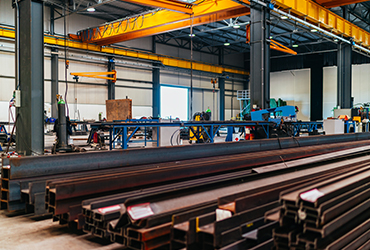



H-beams are high-efficiency and economical section profiles (others include cold-formed thin-walled steels, profiled steel plates, etc.), and due to their reasonable cross-sectional shape, they can make the steel perform better and improve the bearing capacity. Different from the ordinary I-shaped, the flange of the H-beam is widened, and the inner and outer surfaces are usually parallel, which makes it easy to connect with other components with high-strength bolts. Its size composition series is reasonable, and the model is complete, which is convenient for design and selection.
If the train wants to go faster, it has to overcome the resistance of the ground to the wheels. The contact area between the wheel and the ground is larger, and the resistance during the rolling process is also increasing. There is sliding friction and rolling friction between the wheel and the ground. We need sliding friction to overcome rolling friction. If high-speed railways want to run on the track and obtain faster speed, it is necessary to reduce the resistance during the operation through various means. At the beginning of the construction of high-speed railways, in fact, researchers in related fields have also conducted research on other types of rails, and finally came to the conclusion that I-beams are the most suitable. Although the progress of science and technology, the knowledge of related aspects will be more and more, but this does not affect the advantages of using I-beam on the railway. After all, the progress of science and technology is not only the progress of one aspect, but also the progress of the I-beam material.